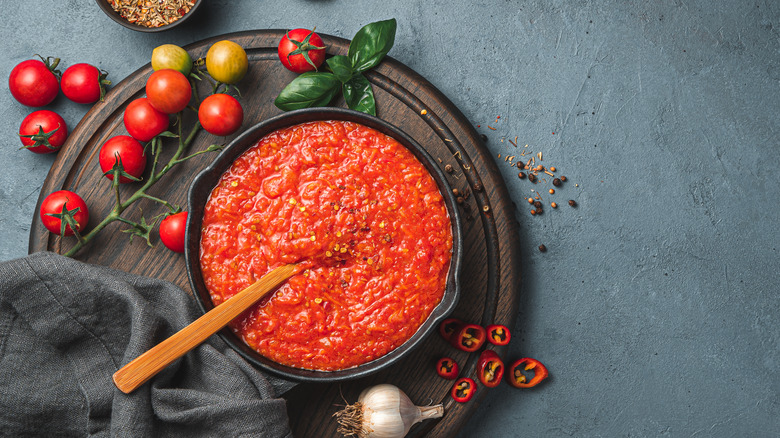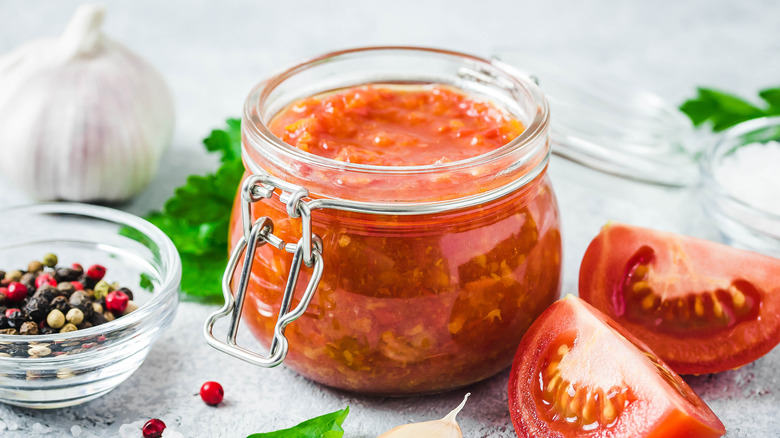Why It's Important To Let Marinara Sauce Rest After Cooking
Though marinara sauce and tomato sauce are often mistaken, marinara sauce carries additional flavors of garlic, basil, and olive oil. Traditionally, marinara sauce is made with fresh tomatoes and delivers a texture that is both soft and rich. "It's a real chef's flavor," author Lidia Bastianich told The New York Times. "It takes work to get to the simplicity."
Making a solid meal with marinara seems like a straightforward task. Grab a few ingredients, let them simmer on the stove, and mix the sauce with your choice of pasta to serve. But for the tastiest marinara dishes, you may want to hold off on serving that sauce right away. As difficult as it might be to resist the urge to dive into the aromatic flavors that have been simmering on your stove, let us convince you otherwise. The most flavorful marinara sauces require a bit of time to reach full culinary capacity.
Patience pays off
Use a skillet to cook your marinara sauce, recommends The New York Times, as a saucepan may not result in an evenly cooked, textured sauce. Simmered sauces produce richer, more complex flavors packed with umami and aromatic caramelization. The longer tomatoes are cooked, the more flavor molecules from inside the skin will be released, notes BBC Science Focus. But that's not all. Once you've simmered your marinara sauce to perfection, wait. Chef Gourmet encourages at-home chefs to let prepared marinara rest — even for a full day — before eating with their favorite pasta. Science has proven that sauces get more flavorsome, reports Taste, and a matured sauce will add depth to your meals.
Weekday dinners made in haste won't taste the same as a slow-cooked meal. If you know you have a busy week ahead, prepare the marinara sauce in advance. Then, when it's time to enjoy your cooking, you'll be able to relish a richer marinara.

